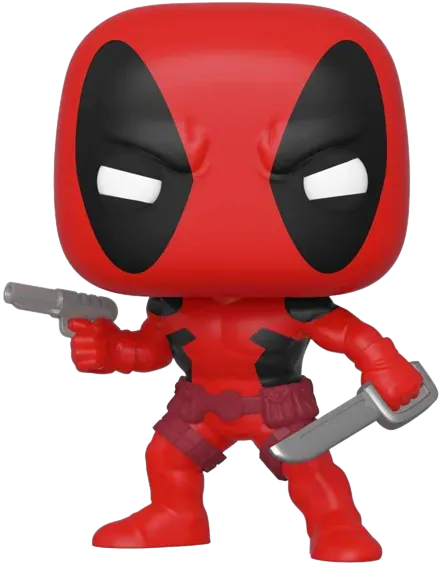¿Who is stronger, Deadpool or Shang-Chi?
Winner
Deadpool

Loser
Shang-Chi

Description
Deadpool, also known as Wade Wilson, is a highly popular antihero from Marvel Comics who first appeared in New Mutants #98 in 1991. Created by writer Fabian Nicieza and artist Rob Liefeld, Deadpool is known for his wacky personality, dark humor, and his tendency to break the fourth wall. Deadpool's primary superpower is his incredible healing factor, which allows him to recover from almost any injury or wound. This power makes him almost invincible and able to withstand even the most lethal attacks. His healing factor also slows down his aging process, allowing him to remain youthful and vigorous for many years. In addition to his healing factor, Deadpool possesses superhuman strength, agility, and reflexes. He is an expert in hand-to-hand combat and a skilled marksman with a variety of weapons, including swords and guns. Another unique aspect of Deadpool's powers is his ability to teleport short distances, which he accomplishes using advanced technology. This power allows him to escape danger quickly and surprise his enemies in battle. Deadpool's origin story is dark and tragic. He was a former soldier who was experimented on by a secret government agency, which gave him his superpowers but also caused him to go insane. After escaping from the agency, he became a mercenary and eventually adopted the persona of Deadpool, the "merc with a mouth". Deadpool has become a fan-favorite character due to his offbeat personality, self-awareness, and humorous approach to superheroics. He is often depicted breaking the fourth wall, directly addressing the reader or making meta-references to the comic book industry. In addition to his comic book appearances, Deadpool has appeared in multiple movies and video games. Overall, Deadpool's superpowers and strength make him one of the most unique and entertaining characters in the Marvel Universe. His healing factor, agility, and combat skills make him an almost unstoppable force in battle, while his comedic personality and pop culture references make him a fan favorite.
Shang-Chi, also known as the "Master of Kung Fu," is a fictional superhero in the Marvel Comics universe. He made his first appearance in Special Marvel Edition #15 in December 1973 and was created by Steve Englehart and Jim Starlin. Shang-Chi is considered to be one of the greatest martial artists in the Marvel Universe, with incredible agility, reflexes, and strength. Shang-Chi's history begins with his father, the infamous criminal mastermind Fu Manchu. Shang-Chi was raised and trained by his father in the ways of martial arts and was initially sent on missions to carry out his father's bidding. However, when Shang-Chi discovered the true nature of his father's activities, he turned against him and joined forces with the British intelligence agency MI6. In the comics, Shang-Chi is often portrayed as a loner and a master of several styles of martial arts. He has demonstrated incredible speed, agility, and strength, which are all enhanced by his mastery of chi energy. Shang-Chi has also trained his body to resist injury and possesses an exceptional healing factor that allows him to recover from wounds more quickly than a normal human. One of Shang-Chi's most notable abilities is his "One Touch of Death," which allows him to strike a single, precise blow that can kill or render an opponent unconscious. Shang-Chi has also mastered the use of weapons, particularly the nunchaku and the staff. Shang-Chi has faced many formidable foes in his adventures, including the likes of the Mandarin, the Yellow Claw, and the Iron Fist. He has also been a member of several superhero teams, including the Avengers and the Heroes for Hire. Overall, Shang-Chi is a skilled and powerful fighter with incredible physical abilities and a mastery of martial arts. His strength, speed, and agility make him a formidable opponent, and his skills have earned him a place among the greatest fighters in the Marvel Universe.